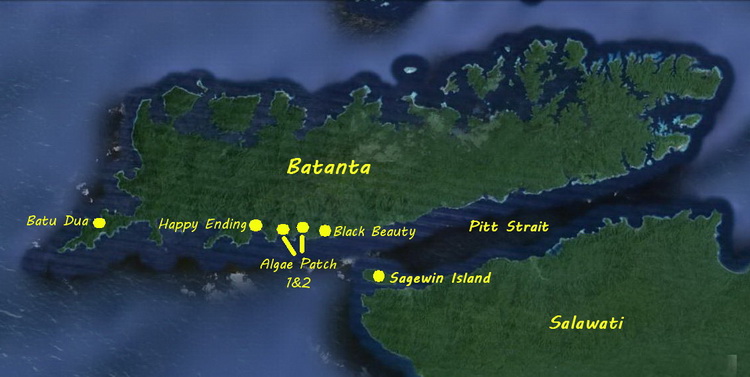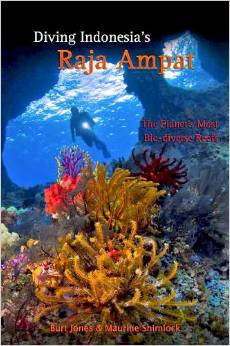The southwest coast of Batanta is known for sheltered black sand bays and critters – a stark contrast to the vibrant and dynamic reefs Raja Ampat is generally famous for. The dive sites in those bays offer some excellent photo-opportunities for macro underwater photographers and diving Batanta on the way down south to Misool, or on the way back north again, is a great way to add macro variety to a trip to the Four Kings.

Map of the main dive sites on Batanta

While they were not the first to dive Batanta, the exploration of the area was largely pioneered by Burt Jones & Maureen Shimlock around 2008, as part of the research for their book projects on the Raja Ampat and Bird’s Head areas.
The description of the sites in their books and articles have greatly increased the popularity of diving around southwest Batanta, an area of Raja Ampat that most liveaboards used to avoid because of the hazards associated with navigating in the 5km wide Pitt Strait.
The initial impression of most divers who try Batanta for the first time is disappointment… compared to the magnificent sites in the Dampier Strait to the north, or to the south in Misool, its easy to conclude you took a wrong turn somewhere and have ended up in a barren wasteland.
The Batanta sites are classic “muck dives” – which is rather loosely defined as diving where there is nothing pretty to see!
Instead you will see sloping black sand with algae patches and coral rubble, where a cursory look will make you wonder why you are there. But to the trained eye there is much to see and the key to a productive and enjoyable experience at Batanta is a good guide.
Guides know where to look and how to spot critters – they also know how to mark the spot so they can find it again!
My personal experience in southwest Batanta are that Black Beauty and Happy Ending are the two best sites and I have done dedicated pages on both of them to illustrate what you (or your guide…) will find there.
Next Page: Batanta’s “Black Beauty” Critter Site
Back To: Batanta Overview
